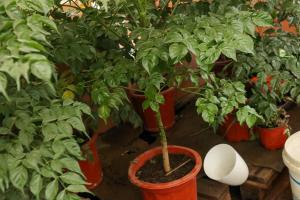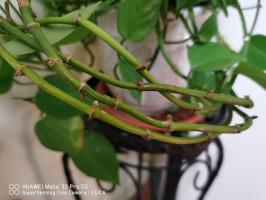What's Eating the Leaves on My Tomato Plants?
Tomatoes are a popular garden crop, prized for their juicy and flavorful fruits. However, growing tomatoes can come with its own set of challenges, including pests that can damage or even destroy your plants. If you're noticing chewed leaves on your tomato plants, it's likely that something is feeding on them. In this article, we'll explore some of the common pests that eat tomato leaves and how to control them.
Cutworms
One of the most common pests that eats tomato leaves is the cutworm. These caterpillars are nocturnal, so you'll usually find them feeding on your plants at night. Cutworms are thick and stocky, with dull brown or gray bodies that can grow up to 2 inches long. They often hide under the soil during the day and emerge at night to feed on tomato leaves, as well as other garden crops. Cutworms can be controlled through the use of barrier protection, such as collars made from cardboard or aluminum foil, or by applying a biological control such as Bacillus thuringiensis, which is toxic to the worms but safe for humans and pets.
Hornworms
Another common pest that eats tomato leaves is the hornworm. These large, green caterpillars can grow up to 4 inches long and have a distinctive horn-like protrusion at one end of their body. Hornworms eat large amounts of tomato leaves and can quickly denude a plant if not controlled. They can be hand-picked off of plants or treated with a biological control such as Bacillus thuringiensis. Another option is to attract natural predators of hornworms, such as parasitic wasps or birds, to your garden.
Aphids
Aphids are small, sap-sucking insects that feed on the leaves and stems of tomato plants. They can be identified by their pear-shaped bodies and the trail of sticky honeydew they leave behind. Aphids can reproduce rapidly, so an infestation can quickly become a serious problem. They can be controlled by spraying the affected plants with a strong jet of water or by applying insecticidal soap or neem oil.
Spider Mites
Spider mites are tiny arachnids that feed on the undersides of tomato leaves. They're difficult to see with the naked eye, but you may notice fine webs on the leaves or a stippling pattern on the upper surface. Spider mites thrive in hot, dry weather conditions and can quickly kill a tomato plant if left unchecked. They can be controlled by spraying the affected plants with water to knock them off or by applying a miticide.
Cultural Practices
In addition to specific pest control measures, there are some cultural practices that can help prevent pest infestations and promote healthy tomato plants. These include rotating tomato crops each year to prevent the buildup of soil-borne pests and diseases, maintaining a tidy garden by removing fallen leaves and debris, and providing adequate spacing between plants to promote air circulation and reduce the spread of pests.
In conclusion, if you're noticing chewed leaves on your tomato plants, it's likely that some sort of pest is feeding on them. By identifying the pest and implementing appropriate control measures, you can prevent further damage and ensure a healthy and productive harvest.

 how many times do yo...
how many times do yo... how many planted tre...
how many planted tre... how many pine trees ...
how many pine trees ... how many pecan trees...
how many pecan trees... how many plants comp...
how many plants comp... how many plants can ...
how many plants can ... how many plants and ...
how many plants and ... how many pepper plan...
how many pepper plan...































